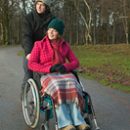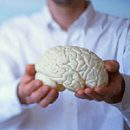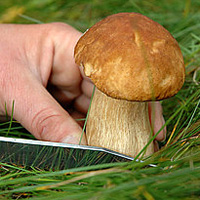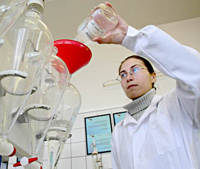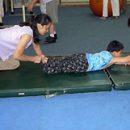Sedal Nerve is the largest in our body, so it can also be ill. But why the sciatic nerve hurts? What reasons forcing it «capricious» and what can be taken to prevent the development of sedellastic neuralgia - learn from the article.
Content
All these symptoms are due to the functional peculiarities and location of the sedlicate nerve, which begins on the sacrilant nervous plexus, passes under the muscles of the buttock through the back surface of the hip, and slightly reaching the poploval fifth, splits into two downward branches. Sedal nerve provides the skin sensitivity of the respective zones, conducts motor pulses to the muscles, extending the body and the thigh, bending the shin and raising up the stop.
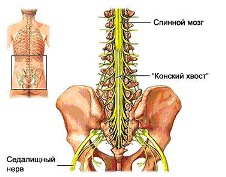
At the same time during the first day, impaired skin sensitivity and muscle weakness increase. The root squeezed by a thickened by a bunch or bone exploration during osteochondrosis, gradually gives an increasing pain and numbness. Muscular weakness joins much later, with a far-seated lesion possible muscle atrophy.
Squeezing the scooped nerve muscles is called tunnel syndrome. Some diseases of the spine and joints, injuries, flatfoot and even unsuccessful injections can be given to it. The manifestations of tunnel syndromes are diverse: from pain in the buttock to burning pain in the leg sole and the impossibility of controlling the movements of the foot.
Injuries of the seeded nerve (bruises, breaks, brushing and cutting wounds) are accompanied, as a rule, moderate pain, but violate the transmission of motor pulses. They can lead to muscle atrophy, paralyams, as well as to the occurrence of dry skin and trophic ulcers on the legs.
A number of diseases that violate the metabolism is able to disrupt the work of a sedlication nerve - it is diabetes, some diseases of the thyroid gland, various poisoning.
The herpes virus caused by deprived, sometimes gives severe pain and rash in the form of bubbles along the sedation nerve.
Computer tomography allows you to study in detail not only bone structures, but also intervertebral discs. It is indispensable in the diagnosis of disk hernia, as well as tumors and traumatic damage. «Make out» spinal cord, give a forecast of its viability during squeezing allows magnetic - resonant tomography. To judge the nature of the defeat of the satellite nerve, the features of the process that happens in it allows electromyography. This method is a study of muscle bioelectric activity under the action of different types of stimulation.
With massive disk hernias, when the functions functions are grossly broken, surgical treatment becomes necessary. Recently, in our clinics, it became possible to carry it out with the help of endoscopic technology. Such operations are small and allow patients to rise to their feet on the third day after the operation. Approximately the treatment is also carried out and when the spinal root is composed of bone exploration during osteochondrosis.
Neuromuscular tunnel syndromes are treated mainly conservative. Blockades, manual therapy, wearing special belts and orthopedic stelks in combination with the reception of anti-inflammatory and anti-ethro, as well as drugs that reduce excessively high muscle tone allow us to succeed.
The inflammatory damage of the vertebrae and intervertebral joints requires not only the fight against inflammation, but also antibacterial therapy, if the reason for the inflammatory process is the infection invaded. In tumors of the spinal cord and its roots resort to surgical treatment, radiation and chemotherapy.
The degree of restoration of the function of a sedlication nerve depends primarily on the severity and limitation of its defeat. Many complications and consequences can be avoided if you turn to the doctor in a timely manner and start treatment as early as possible.

